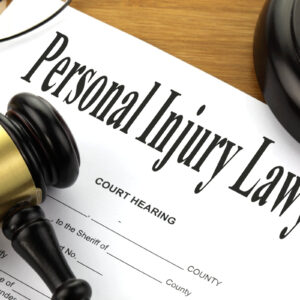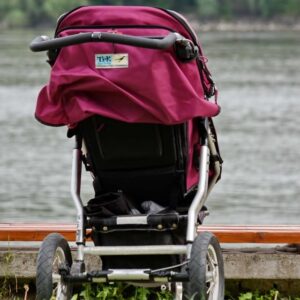The rumble of the engine, the open road – the thrill of riding a motorcycle is undeniable. But the reality is, motorcycles offer less protection than cars, making accidents potentially devastating. If you’re ever involved in a motorcycle accident, knowing what to do immediately afterward can be crucial for your safety, health, and future well-being. This checklist outlines seven essential steps to take.
Secure the Scene and Ensure Safety After the Accident
Your immediate safety is the top priority. After a motorcycle accident, adrenaline can be pumping, and it’s easy to overlook potential dangers.
- Check Yourself and Others: Assess yourself and any passengers for injuries. If possible, check on the other driver(s) involved.
- Move to a Safe Location: If your motorcycle is still operational and you are able to move it, get it (and yourself) off the road and away from oncoming traffic. If the motorcycle is immobile, and moving it would risk further injury, then carefully move yourself and others a safe distance away from danger. For example, move off the roadway, onto the shoulder, or behind a guardrail. Be sure to look for oncoming traffic.
- Activate Hazard Lights and Warning Devices: Turn on your motorcycle’s hazard lights and, if you have them, deploy warning triangles or flares to alert other drivers. This is especially crucial at night or in areas with reduced visibility.
- Call for Help: Dial 911 (or your local emergency number) to request medical assistance and police. Even if injuries seem minor, it’s best to have paramedics evaluate everyone involved.
Seek Immediate Medical Attention After a Motorcycle Accident
Even if you feel fine after the crash, it’s vital to get checked out by a medical professional. Adrenaline can mask pain, and some injuries, like internal bleeding or concussions, may not be immediately apparent.
- Accept Medical Assistance at the Scene: Allow paramedics to assess your condition and provide any necessary treatment at the accident site. Refusing medical assistance at the scene can make it more difficult to claim your injuries later on.
- Go to the Emergency Room or Urgent Care: If you didn’t receive immediate medical attention at the scene, go to the nearest emergency room or urgent care clinic as soon as possible. Explain that you were involved in a motorcycle accident and provide a detailed account of how the accident occurred.
- Follow Up with Your Primary Care Physician: After your initial emergency care, schedule a follow-up appointment with your primary care physician or a specialist. This ensures that your injuries are properly monitored and treated over time. Many injuries from motorcycle crashes may not be immediately noticeable, such as whiplash or soft tissue damage.
- Document All Medical Treatments: Keep meticulous records of all medical treatments, including doctor’s visits, hospital stays, physical therapy, medications, and any other related expenses. This documentation is critical for your insurance claim and potential legal action.
The types of injuries sustained in motorcycle accidents are wide-ranging and can be severe. They often include: * Traumatic Brain Injuries (TBI) * Spinal Cord Injuries * Broken Bones (arms, legs, ribs, clavicle) * Road Rash * Internal Injuries
Early diagnosis and treatment of these injuries are essential for recovery.
Document the Accident: Creating a Comprehensive Motorcycle Accident Report
Gathering detailed information at the scene is crucial for your insurance claim and any potential legal action. Take photos and videos to capture as much as you can.
- Photograph the Scene: Take pictures of everything, including the motorcycles involved, the other vehicles, any visible damage, skid marks, traffic signs, and the overall accident location. Use a camera or smartphone to capture wide-angle shots and close-ups of the damage.
- Document Injuries: Photograph any visible injuries you and others sustained. This can include cuts, bruises, scrapes, or other physical signs of trauma. These images will serve as evidence of the severity of your injuries.
- Record Environmental Factors: Note the weather conditions, such as rain, snow, fog, or bright sunlight, as well as the road conditions (e.g., potholes, gravel, uneven surfaces). These factors can contribute to the accident.
- Create a Written Summary: Write a detailed account of what happened before, during, and after the accident. Include the date, time, location, and weather conditions. Describe the events leading up to the crash, the impact, and any actions taken afterward. If you can’t do it at the scene, do it as soon as possible afterwards while the details are still fresh.
Gather Information and Witness Statements for Your Motorcycle Accident Claim
Collecting contact information and witness statements can strengthen your case significantly.
- Exchange Information with the Other Driver(s): Obtain the other driver’s name, address, phone number, insurance information (company and policy number), and driver’s license number. Provide your information as well.
- Identify and Contact Witnesses: Look for any witnesses at the scene of the accident and ask if they saw what happened. Obtain their names, addresses, and phone numbers.
- Obtain Witness Statements: If possible, ask witnesses to provide a written or recorded statement about what they saw. Their perspective can be invaluable in determining fault and supporting your claim. Even a brief description of the accident from a neutral observer can carry significant weight.
Report the Motorcycle Accident to the Authorities and Your Insurance Company
Reporting the accident is a crucial step for documenting the incident and initiating the claims process.
- File a Police Report: Ensure that the police are called to the scene and that they create an official accident report. Obtain the police report number and the name of the investigating officer. You will need this information when filing your insurance claim.
- Notify Your Insurance Company: Contact your insurance company as soon as possible to report the accident. Provide them with all the details you have gathered, including the police report number, the other driver’s information, and a description of the accident. Be honest and accurate, but avoid speculating or admitting fault.
- Understand Your Policy: Review your insurance policy to understand your coverage limits, deductibles, and any specific requirements for filing a claim. If you have questions, contact your insurance agent for clarification.
Dealing with uninsured or underinsured motorists can be complex. If the at-fault driver doesn’t have insurance or their coverage is insufficient to cover your damages, you may need to rely on your own uninsured/underinsured motorist coverage. For example, if your medical bills and motorcycle repairs amount to $50,000, but the other driver only has $25,000 in coverage, your underinsured motorist policy could help cover the remaining $25,000.
Protect Your Legal Rights: Consult with a Motorcycle Accident Attorney
Motorcycle accident cases can be complex, especially when dealing with insurance companies. Talking to an attorney can help.
- Seek Legal Advice: Consult with a qualified motorcycle accident attorney as soon as possible. An attorney can evaluate your case, advise you on your legal options, and represent your interests throughout the claims process.
- Understand Your Rights: A motorcycle accident attorney can explain your rights and responsibilities under the law. They can help you understand the potential value of your claim and guide you through the legal process.
- Negotiate with Insurance Companies: Insurance companies may try to minimize payouts or deny claims altogether. An attorney can negotiate with the insurance company on your behalf to ensure that you receive fair compensation for your injuries and damages.
Potential legal claims and settlements in motorcycle accident cases can vary significantly depending on the circumstances of the accident and the extent of your injuries. These can include claims for: * Medical expenses (past and future) * Lost wages (past and future) * Property damage (motorcycle repair or replacement) * Pain and suffering * Punitive damages (in cases of gross negligence)
For example, in a case where a motorcyclist suffered a severe leg fracture due to a driver running a red light, the settlement might include compensation for medical bills, lost income, and pain and suffering, potentially reaching hundreds of thousands of dollars.
Document Everything: From Medical Bills to Motorcycle Repairs
Keeping thorough records of all aspects of the accident is essential for your claim.
- Keep a Record of All Expenses: Maintain a detailed record of all expenses related to the accident, including medical bills, prescription costs, therapy expenses, motorcycle repair bills, lost wages, and any other out-of-pocket costs.
- Save All Documentation: Keep copies of all documents related to the accident, including the police report, insurance correspondence, medical records, repair estimates, and any other relevant paperwork.
- Track Your Progress: Keep a log of all communications with insurance companies, attorneys, and medical providers. Note the dates, times, and subjects of each conversation. This will help you stay organized and ensure that you have a clear record of your claim’s progress.
Motorcycle accidents can be a life-altering experience. By following this checklist, you can protect yourself, ensure your well-being, and take the necessary steps to pursue a fair recovery. Remember, seeking medical attention and legal advice promptly are crucial for navigating the aftermath of a motorcycle crash.





Nice blog! Is your theme custom made or did you download it from somewhere? A theme like yours with a few simple adjustements would really make my blog jump out. Please let me know where you got your theme. Cheers